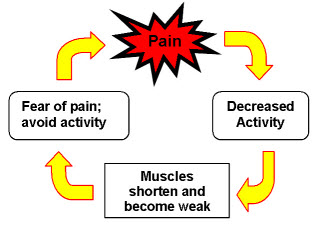More than 80 percent of adults experience back pain at some point in their lives. In the past, it was commonly believed that rest was important for recovery from back pain. However, that is just not the case. Resting through a back injury can prolong your recovery. The longer you rest, the harder it becomes to resume your regular activities.The good news is that most back pain resolves if you treat it by being active. Staying active, as well as practicing good mechanics such as proper posture and lifting techniques, speeds up the recovery process and decreases the risk of chronic disability.Inactivity can prolong pain. When we are inactive, we become stiff, and our muscles and bones weaken. We can become depressed, and the pain can feel worse.
The earlier you get active, the sooner you’ll be able to resume your regular activities.

Source: Healthy Alberta
Being active is key to recovering from back pain. Understanding your pain and the benefits of staying active will help to ease your fears of causing further harm and will enable you to take an active role in recovery and prevention. Finding activities you enjoy will help you to recover quickly and to prevent future flare-ups.
When you allow your employees to stay at home and not remain active, it increases their time away from work. Our Health and Wellness Rooms address these issues in a positive and encouraging environment. With trained medical staff in each room, your employee will be encouraged within their restrictions to remain productive. This helps the employee maintain good mental health. Contact Proof:Positive and let us help you keep your injured employees active while enhancing their sense of confidence and well-being.




